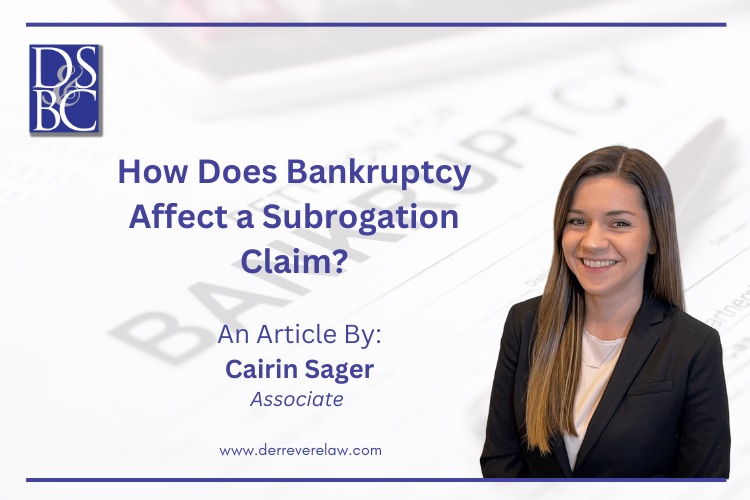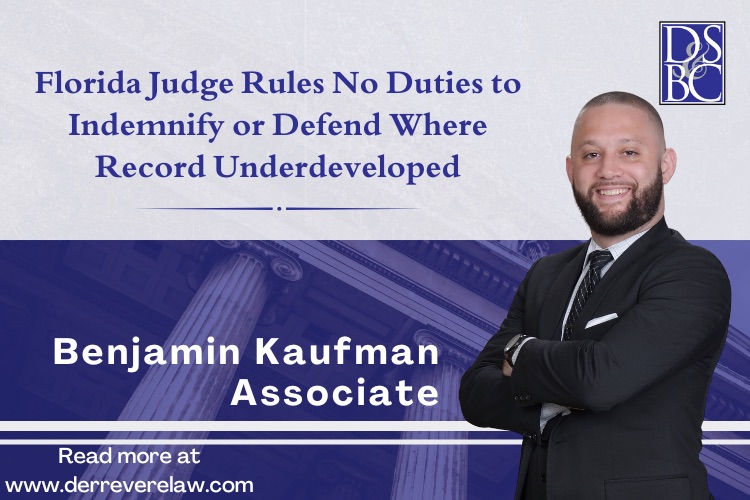How Does Bankruptcy Affect a Subrogation Claim?

Bankruptcy is a scary word… and the implications can be felt far and wide. This article will focus on the impact of bankruptcy on a subrogation claim.
Bankruptcy is a legal process through which people or other entities who cannot repay debts to creditors may seek relief from some or all of their debts. In most jurisdictions, bankruptcy is imposed by a court order. Bankruptcy can have serious long-term financial and legal consequences.
There are several types of bankruptcy, classified into “chapters,” in reference to each chapter of the United States Bankruptcy Code:
- Chapter 7: Also known as “liquidation” or “straight” bankruptcy, it is the most common type. In Chapter 7, a debtor’s non-exempt assets (if any exist) are sold off to pay as much of the debt as possible. Remaining eligible debts are then discharged, freeing the debtor from them.
- Chapter 13: This type of bankruptcy is more of a reorganization for individuals. Instead of selling off assets, the debtor is put on a payment plan of 3 to 5 years to pay off all or part of their debts. Only individuals with a regular income are eligible for Chapter 13 bankruptcy.
- Chapter 11: This is most commonly used by businesses. Similar to Chapter 13, it allows for a reorganization of debt so the debtor can keep their business operational while repaying creditors over time.
- Chapter 12: This is specifically for family farmers and fishermen, allowing them to continue their operations while repaying their debts.
In cases where a defendant goes bankrupt during litigation, but insurance exists covering the plaintiff’s claims, there is a basis to obtain relief from the bankruptcy stay and continue to pursue litigation and obtain funds from the insurance proceeds.
For purposes of litigation, if the insured is an undischarged bankrupt, bring the subrogated action in the name of the insured’s trustee in bankruptcy (with notice as required by the Bankruptcy Code). Courts will look at insurers as sophisticated and capable parties and hold them to a higher standard for litigation.
The following steps briefly outline the effect bankruptcy can have on a subrogation claim, specifically. Keep in mind that there are several additional parties and subrogation claims tend to fall lower on the priority list in Bankruptcy litigation.
1. Automatic Stay: Once a debtor files for bankruptcy, an automatic stay is initiated, which stops all collection efforts against the debtor. This includes subrogation claims. Collection efforts cannot resume until the stay is lifted or the bankruptcy case is closed, dismissed, or discharged.
United States Bankruptcy Code Section 362 automatically imposes a stay on all actions against a debtor who files for bankruptcy. This means that any and all lawsuits against the person or entity filing, even those that are unrelated to the bankruptcy, are put on hold. The stay is immediately effective whether or not a creditor, such as a plaintiff in a personal injury case, receives notice of the stay and regardless of whether the court makes an order entering it.
However, Bankruptcy Code Section 362 also provides an outlet to overcome the automatic stay. Section 362(d)(1) provides that on the request of a party and after notice and a hearing, the court shall grant relief from the stay for “cause, including the lack of adequate protection of an interest in property of such party in interest.” Although the grounds for relief from a bankruptcy stay for cause includes lack of adequate protection of an interest in property, relief from a stay is not limited to that reason.
2. Priority of Claims: In bankruptcy, claims are paid in a hierarchy or order set by the bankruptcy code. Secured creditors are typically paid first, followed by unsecured creditors. Subrogation claims are categorized as general unsecured claims, which are paid after priority unsecured claims. In terms of the hierarchy or order, this leaves subrogation claims towards the end of the payout and may leave little to no money to satisfy a subrogation claim.
However, in a Chapter 7 bankruptcy, unsecured debts are normally discharged, meaning the debtor is no longer legally required to pay them. Conversely, in a Chapter 13 bankruptcy, the debtor will pay a portion or all of the unsecured debts through the repayment plan, depending on their income, expenses, and types of debt owed. See below.
3. Discharge of Debts: If the debtor receives a discharge in bankruptcy, most debts are wiped out, including subrogation claims. This means the subrogated party cannot collect on the debt, even after the bankruptcy case is closed.
4. Proof of Claim: To participate as a creditor in a bankruptcy case, the subrogated party must file a proof of claim in the bankruptcy court. If a proof of claim is not filed, the subrogated party may not receive any distribution from the bankruptcy estate. This is a firm rule of the Bankruptcy Court.
5. Reaffirmation: In some cases, although rare, a debtor may decide to reaffirm a specific debt, meaning they agree to repay a debt even though it could be discharged in the bankruptcy decision.
6. Chapter 13 Bankruptcy: If the debtor files for Chapter 13 bankruptcy, they will propose a repayment plan to pay off their debts over a period of three to five years. This plan may include paying off a subrogation claim, although not guaranteed if there are little to no funds allotted for the repayment plan.
It has been well settled that “cause” for relief from a bankruptcy litigation stay is not defined in the Bankruptcy Code and is handled on a case-by-case basis. (In re Fernstrom Storage and Van Co. (7th Cir. 1991) 938 F.2d 731, 735 (C.A 7 1991).) The moving party is only required to make an initial showing that he is entitled to relief from the stay, the burden then moves to the debtor to overcome that showing. (In re Sonnax Industries, Inc. (2nd Cir. 1990) 907 F.2d 1280, 1285.) Overall, a bankruptcy filing is truly handled on the merits of each case individually, there is never a guarantee to a payout as a creditor, whether that is a subrogation claim or not. The above is a very general outline of steps and potential outcomes, it does not reflect the typical outcome of each case.



